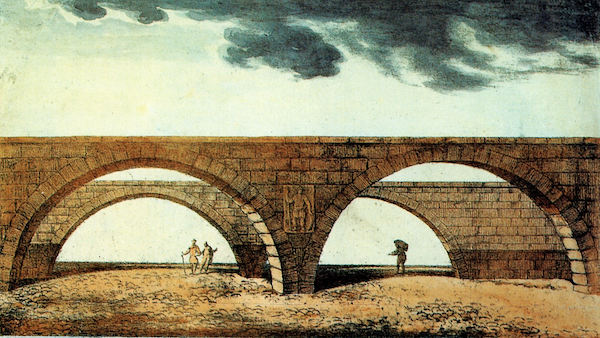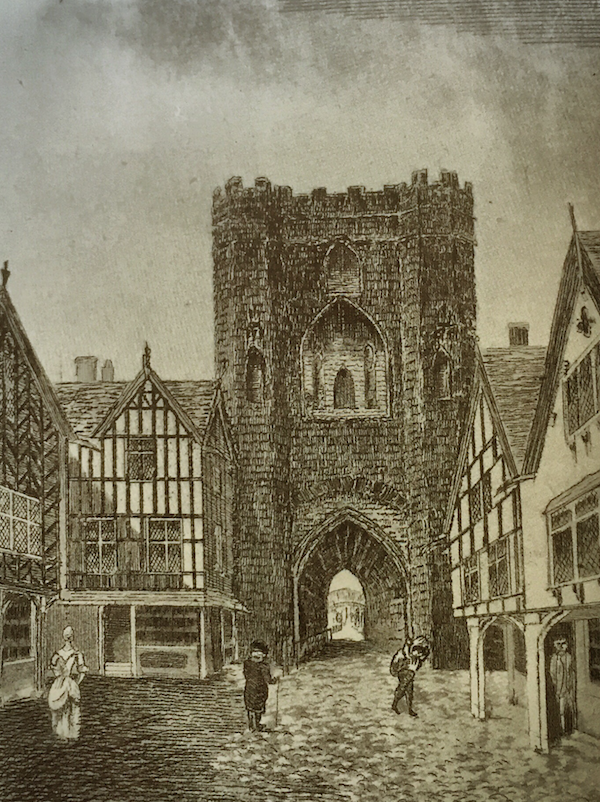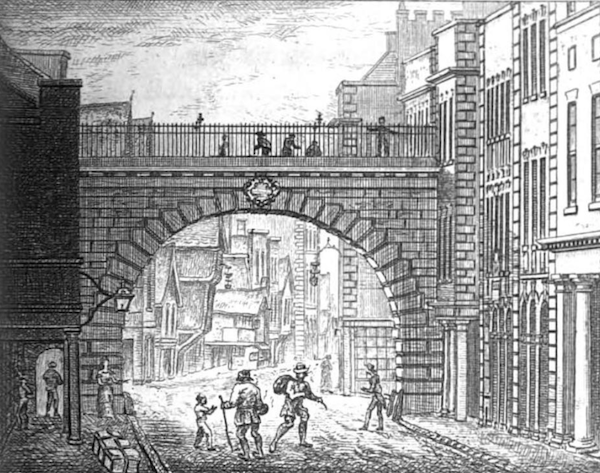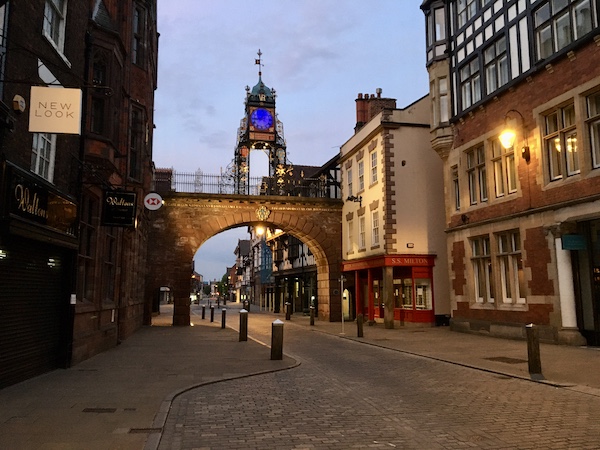The East Gate
There has been a gateway of some description on the site of Chester’s current East Gate since the Romans first established a fortress in the 1st century AD. The Romans named their fortress Deva, and the four main streets of modern Chester still follow the line of the streets of Roman Chester. The Romans built four gates to the fortress. The East Gate and the North Gate were sited in the same places as their modern counterparts. The Roman south gate was sited at the bottom of modern day Bridge Street and the Roman west gate was at the juncture of today’s Watergate and Nicholas Streets.

The Roman East Gate, the Porta Principalis Sinistra, opened onto the main road to London and York and was the most important of the Roman gates. The double Roman arch illustrated above was discovered when the medieval East Gate was demolished in 1766. The passageway through the medieval East Gate had incorporated the Roman arches on the right, while the arches to the left were concealed in the medieval tower at the side of the medieval arch. The carved figure between the arches was described as a soldier or Mars, the Roman god of war. Above the gateway there was an inscription on Welsh slate in tribute to the emperor.
For centuries, the East Gate remained a principle entrance to the walled City of Chester. The present archway of the East Gate was built in 1768, replacing a narrow medieval gateway flanked by octagonal towers that was four storeys high. The medieval East Gate was similar in style to the early 14th century King’s Gate at Caernarfon Castle. When the medieval gateway was pulled down, remains of its Roman predecessor were found incorporated in the medieval stonework. Chester’s Walls of today are a complete circuit of approximately two miles and remain a splendid example of a fortified medieval town. The present City Wall follows the line of the Roman defences on the north and east sides of the City from St. Martin’s Gate to the Newgate, and still contains substantial portions of Roman work.

From the 1230s, Chester was a busy port and a prosperous trading centre. Tolls were charged on all merchandise entering the city. Around 1270 the toll rights of the East Gate were granted by Reginald de Grey, justice of Chester, to Hervicus de Bradford and his son Robert who collected tolls from goods entering the city through the East Gate. Through inheritance, the toll rights were later passed over to the Earls of Oxford. In the early 17th century, Sir Randulph Crewe acquired the toll rights and in 1662, his descendant John Crewe formally released the toll rights to the City of Chester.

During the middle ages, Chester had six major gates and several posterns. Posterns were smaller doors or gates, sometimes in discreet or concealed locations in the city walls, such as the Kaleyard Gate behind the Cathedral. The New Gate (not to be confused with the current Newgate) also known as Wolfgate is the only original medieval gate that remains in situ today but is no longer in use as a thoroughfare. The other gates were all replaced in the 18th and 19th centuries. In 1768, with financial help from the Grosvenor family, the East Gate was the first of the four main medieval gates to be demolished and replaced with their modern equivalents. The current Bridgegate was built in 1782, the Watergate in 1789, and then the Northgate in 1810. The Shipgate was a simple 12th century archway leading from the docks a few yards from the Bridgegate and has been reconstructed in Grosvenor Park.

The Eastgate Clock tower above the present East Gate gateway was erected in 1897 to commemorate Queen Victoria’s Diamond Jubilee. The Eastgate Clock tower on the current East Gate is said to be the most most photographed clock tower in the UK after London’s Big Ben. The clock mounted on top of a wrought-iron structure was designed by John Douglas and built by J.B. Joyce of Whitchurch. The current Grade I listed structure offers a very different view to its medieval counterpart, upon which the heads of executed individuals were often displayed on spikes as a deterrent to criminals and enemies.
